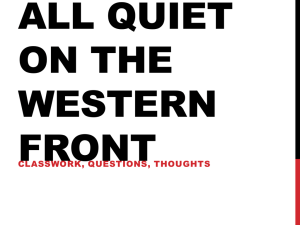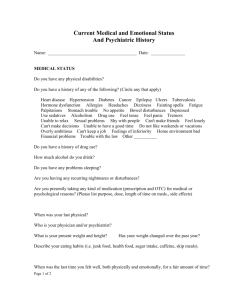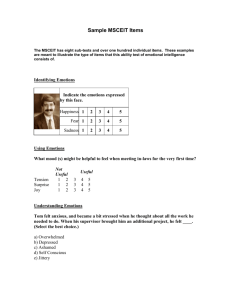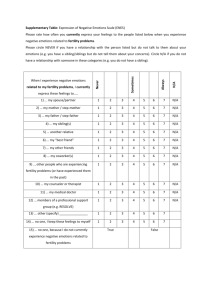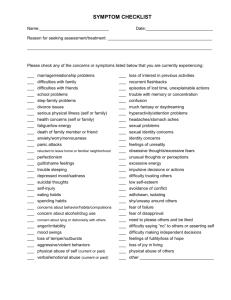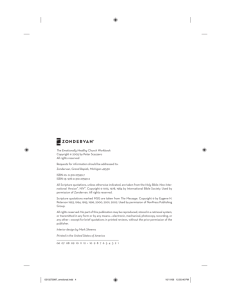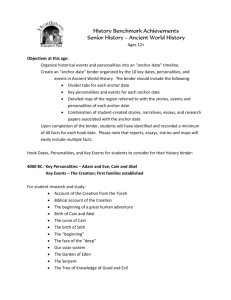Mental Emotional Health Study Guide
advertisement
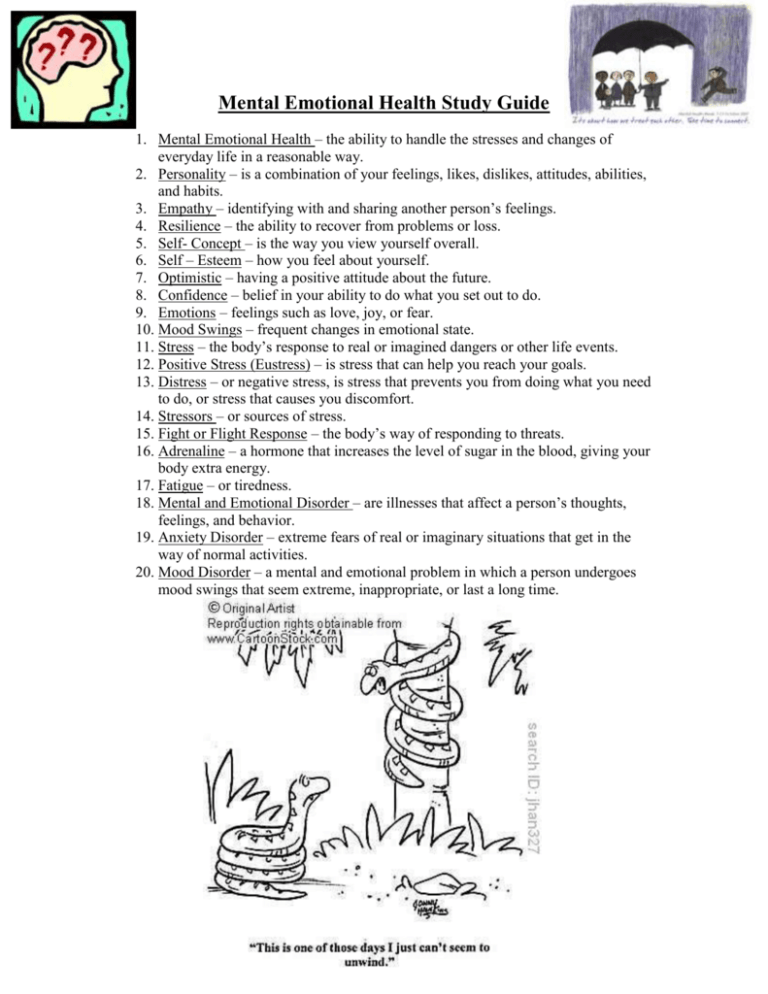
Mental Emotional Health Study Guide 1. Mental Emotional Health – the ability to handle the stresses and changes of everyday life in a reasonable way. 2. Personality – is a combination of your feelings, likes, dislikes, attitudes, abilities, and habits. 3. Empathy – identifying with and sharing another person’s feelings. 4. Resilience – the ability to recover from problems or loss. 5. Self- Concept – is the way you view yourself overall. 6. Self – Esteem – how you feel about yourself. 7. Optimistic – having a positive attitude about the future. 8. Confidence – belief in your ability to do what you set out to do. 9. Emotions – feelings such as love, joy, or fear. 10. Mood Swings – frequent changes in emotional state. 11. Stress – the body’s response to real or imagined dangers or other life events. 12. Positive Stress (Eustress) – is stress that can help you reach your goals. 13. Distress – or negative stress, is stress that prevents you from doing what you need to do, or stress that causes you discomfort. 14. Stressors – or sources of stress. 15. Fight or Flight Response – the body’s way of responding to threats. 16. Adrenaline – a hormone that increases the level of sugar in the blood, giving your body extra energy. 17. Fatigue – or tiredness. 18. Mental and Emotional Disorder – are illnesses that affect a person’s thoughts, feelings, and behavior. 19. Anxiety Disorder – extreme fears of real or imaginary situations that get in the way of normal activities. 20. Mood Disorder – a mental and emotional problem in which a person undergoes mood swings that seem extreme, inappropriate, or last a long time. 21. Defense Mechanism - A temporary way to deal with emotions or escape problems. 22. Displacement – Taking your frustrations out on others. 23. Projection – when you feel uncomfortable with an emotion you “put it on” the other person. 24. Denial – refusing to accept reality. 25. Rationalization – making excuses for behavior or shortcomings. 26. Maslow – was a psychiatrist who developed the pyramid of needs (need for love, safety need, and physical needs). 27. Parietal Lobe – controls your senses. 28. Frontal Lobe – controls moods and personality. 29. Occipital Lobe – controls vision. 30. Cerebellum – controls coordination and balance. 31. Color Personalities: a) Red - Attributes: Strength, force, power, control and leadership. Stimulation, warmth, excitement. Good health, physical energy, love, passion, courage, protection. b) Orange - Attributes: The color of nature, warm, invigorating, confident and courageous. Encouragement, helpfulness, concentration, attraction, adaptability, stimulation. Characteristics: As nature lovers, orange people love being outdoors, whether walking in the forest or participating in sports. Nature invigorates them and being housebound depresses them. Well thought of by others, orange personalities make good friends and excel at careers such as farming or ranching, wilderness guides or professional sports. c) Yellow - Attributes: Intellectual, wise, quick witted, confident, divinity, communicative, eloquent, full of movement, luminous, thoughtful and royal. Attractive, persuasive, trustworthy and charming. Characteristics: Yellow people make good leaders as they are methodical in their thinking and decisive. They analyze before acting. d) Green - Attributes: Stability, harmony, pacifity, luminosity, quietude and peace of mind. Money, luck, success, prosperity, abundance, employment, fertility, healing, growth and cooperation. Characteristics: Green personalities are nurturers. They wish to help, heal, or mother others. As such, these people can be found in the medical profession or social work. Others view them as good listeners and trustworthy as they keep their thoughts to themselves. As natural observers, they make excellent guidance counselors, human resource people, psychologists and psychiatrists. They can see all sides to issues and respect all positions. e) Blue - Attributes: Love, devotion and harmony. Healing, peace, psychic ability, patience, happiness. Symbolic of the ocean, sleep, twilight, and the sky. Characteristics: Blue people are emotional and stay within themselves. They tend to not trust others as they carefully watch them. f) Purple - Attributes: Nobility, spiritual aspiration, honor and self-esteem. Magnetic, tense, powerful, healing, spiritual, meditative, religious, royal and divine. Characteristics: Purple personalities strive to better themselves spiritually, mentally and emotionally. They are voracious readers, constantly seeking knowledge, particularly in tales of the lives of others. Wanting a greater spiritual connection, they love the subjects of theology and religion. g) Pink - Attributes: Peace, love, friendship, compassion, and relaxation. Gentle emotions and unions. Overcoming evil, honor, morality, friendship and success. Characteristics: People who love the color pink either seek or already enjoy a peaceful state of grace or bliss. They smile constantly which can sometimes irk others who are not in the same space. These people try to see and bring out the best in others, truly loving everyone. h) White - Attributes: Protection, purification, freshness, cold, and potential. Spiritual strength, faith, truth and sincerity. Characteristics: Despite outward appearances, those who favor white may have flaws not apparent to others. They observe others and camouflage themselves in their environment, seeing themselves as special and above it all. Sometimes these people show a false sense of shyness, waiting to be noticed so that they may express their very outspoken thoughts. i) Black - Attributes: Negativity or the removal of negativity. Outer space, the universe, night. Fertility, wisdom, sadness, mourning, loss, death, discord, confusion, fear and evil. Characteristics: Black personalities are methodical statisticians who want every thing done in detail. The make fine accountants and tax IRS auditors and collection agents. They always finish what they begin. Although not leaders, under direction, they are hard-working fixers who zero in on the essence of any problem. They tenaciously love to find the mistakes and faults of others like detectives or puzzle fans. People who like black hold things inside and do not want to be touched. They put a barrier between themselves and others, keeping their strength inside so that they can better protect their emotions. They want no one to take advantage of their sensitivity despite their wish to be part of the world around them. Strategies for Managing Stress 1. 2. 3. 4. 5. 6. 7. Eat nutritious foods. Be physically active Talk with others Use your time wisely Think positively Relax Get enough sleep 10 Most Common Phobias 1. Arachnophobia – fear of spiders. 2. Social Phobia – fear of being evaluated negatively in social situations. 3. Aerophobia – fear of flying. 4. Agoraphobia – involves intense fear and avoidance of any place or situation where escape might be difficult or help unavailable in the event of developing sudden panic-like symptoms. 5. Claustrophobia – fear of being trapped in small confined spaces. 6. Acrophobia – fear of heights. 7. Emetophobia – fear of vomit. 8. Carcinophobia – fear of cancer. 9. Brontophobia – fear of thunderstorm. 10. Necrophobia – fear of death or dead things.


